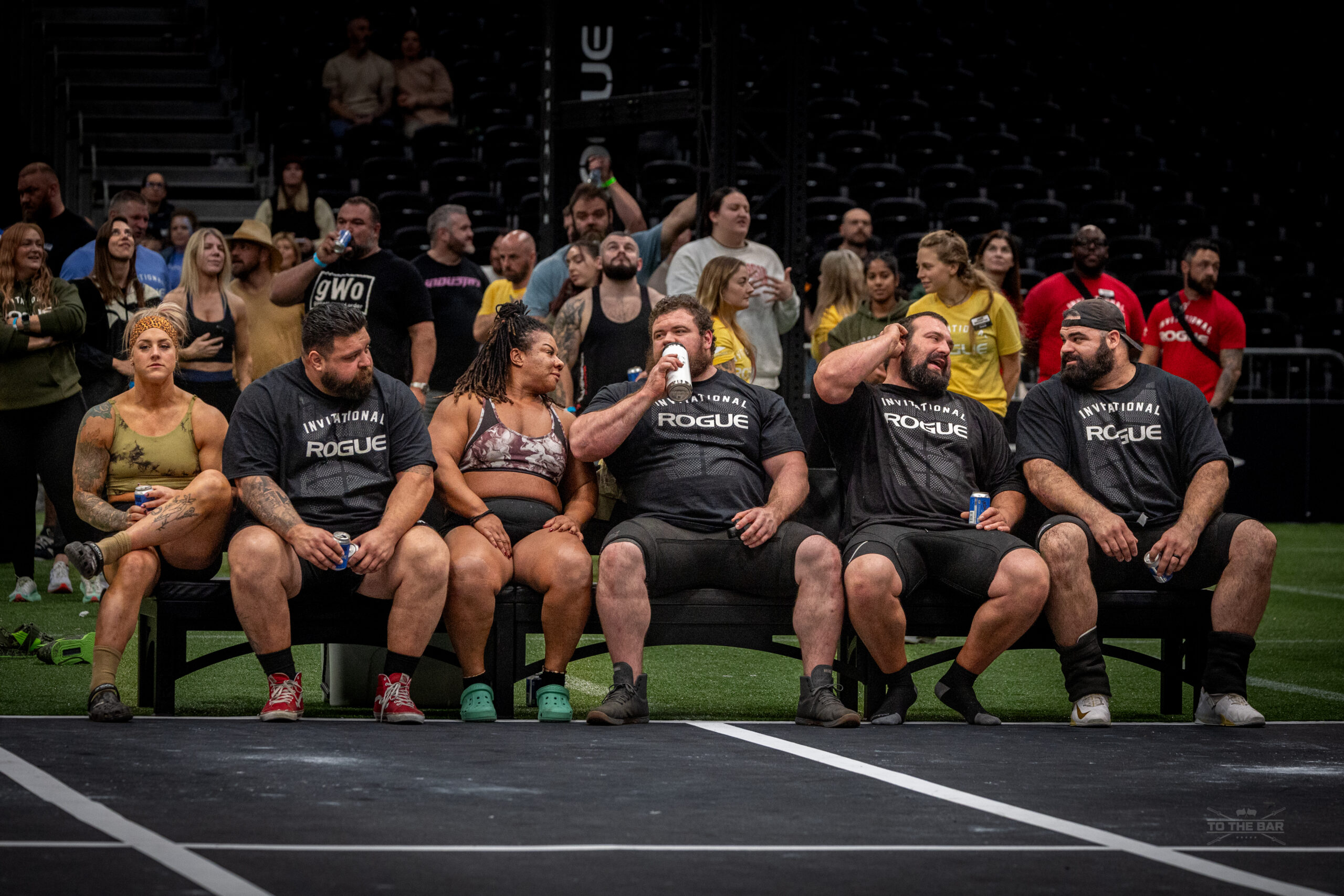Lift or no lift… that is the question…
This is one of the most talked about ‘no lifts’ in recent times. Particularly because Mattie Rogers needed this for points to qualify for Paris 2024 Olympics. She can still make it, but it now depends on other comps that she probably hadn’t planned on attending.
Watch the video and ask yourself what you would call? We are assuming that up until the bar is locked out overhead, everything else about the lift is fine, and from this camera angle, I completely agree with (no press out etc). Therefore, it all comes down to being under control with the barbell, being motionless, and having the knees/legs fully extended and feet inline. So, what do the rules state?
IWF Rule 2.3.2
The athlete returns his / her feet to the same line parallel to the plane of the trunk and the barbell with his / her arms and legs fully extended. The athlete waits for the Referees’ signal to replace the barbell on the competition platform. The Referees give the signal to lower the barbell as soon as the athlete becomes motionless in all parts of the body.
IWF Rule 2.6.2
Failing to finish with the feet and the barbell in line and parallel to the plane of the trunk.
The first thing to say is that we can watch this over and over again in real time or slow-mo. We can have the sound on or off. If possible, we can watch it from different angles. I say this because as a referee, in the heat of the moment, we have none of these options other than to watch it in real time and we only get to see it once.
With that in mind, if watched again, we can clearly hear the down signal. This means 2 of the referees have triggered the majority vote and there is a down signal. Mattie drops the bar from below shoulder height and from what I understand, an original good call was then overturned by one of the referees making it a no lift.
Let’s analyse what could have happened. As stated, referees 1 and 2 hit white and the majority call triggered the down signal. At this stage, referee 3 would then have had to make their call based on the lift completing when Mattie dropped the bar. In this scenario, if I was referee 3, I would have given it a no lift as I don’t believe she was ever stationary with the barbell (rule 2.2.2) or that she was ever in line with the barbell while stationary (rule 2.6.2).
But what if I was referee 1 or 2? Well, this is where it gets very confusing. If referee 1 or 2 (or both for that matter) decided they made an error after hitting white (for example they realised she was never under control) then they are entitled to change their call within a few seconds after pressing the button. We all make mistakes and as referees, this gives us the option to correct a call. This is also useful when a lifter gets the down signal but drops the bar from above the shoulder height or drops the bar off the platform or touches the bar with their feet for example. Now comes the tricky part (if all the above wasn’t tricky enough!!). Mattie was given the following explanation:
Mattie Rogers
‘the final reasoning was two judges pressed their calls (white lights), signaling the down signal. I dropped the bar (as one does) & one judge then changed their white to red because I had “not stopped moving before the down signal was given” and “did not show control of the bar”. I was told. it is the athletes job to show control of the bar regardless of the down signal, ie hold it beyond the down signal.’
Source: ATGInsta & Mattie Roggers
This sort of explains why the call was overturned. In my experience though, I have never heard that a lifter should ‘continue’ the lift for a few more seconds after the down signal. I mean, why would you? You hear the down signal and that should be the end of it right? Not so. In this instance, the down signal was given, and Mattie dropped the bar because like most lifters, that’s the cue to drop it. But it makes sense to hold the position for just a bit longer because in not doing so, she gave the 3rd judge no other choice other than to press red. If she had held still for just a second, the 3rd judge would have given a white, and even if the one of the other two changed their minds post lift, she would have still had 2 white lights.
The final part to all of this is that incredibly, there wasn’t any video replay facility at the competition so the jury weren’t able to review and overturn the overturned decision. But would they have done so, if all the above still happened and Mattie didn’t continue the lift for a few more seconds?? In short, no, they would have still upheld the no lift. It would only have made a difference if she had continued the lift and managed to get the bar under control. At this point a jury review on replay would have been reasonably considered.


